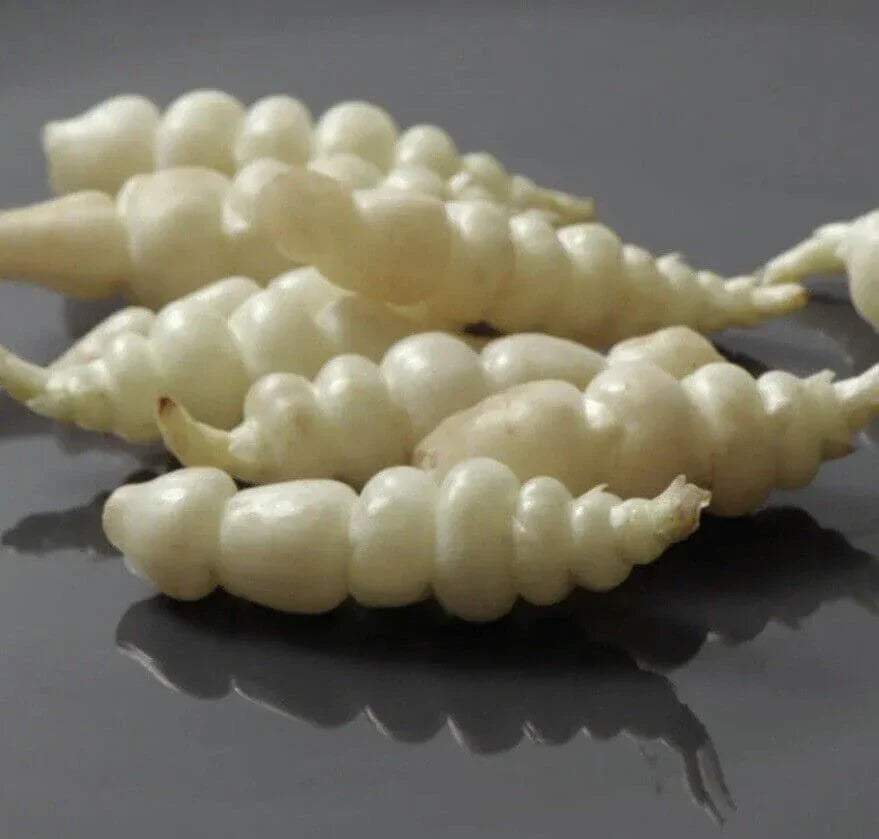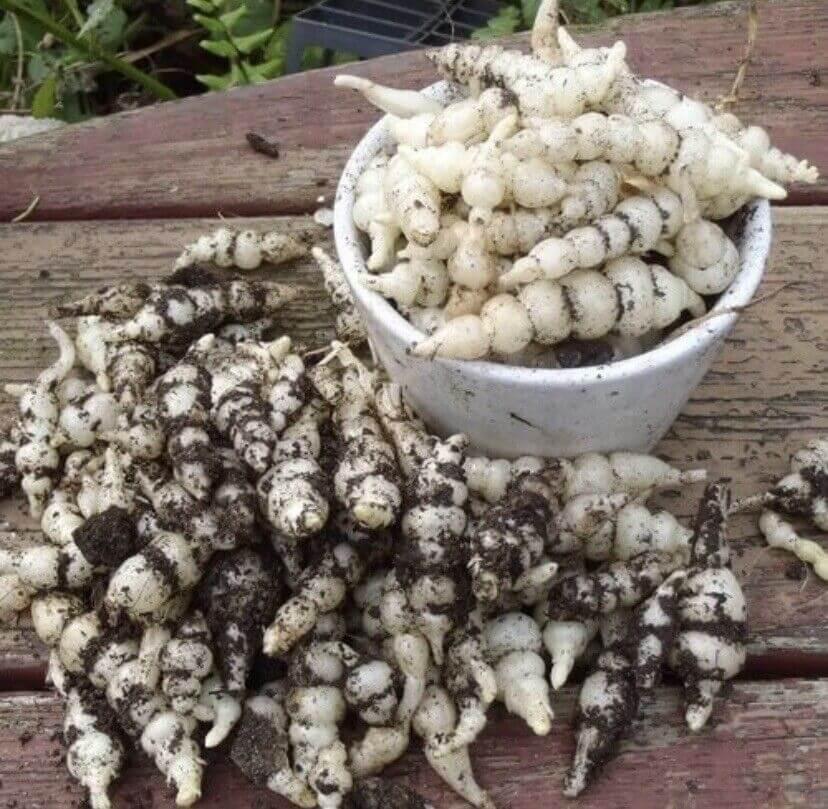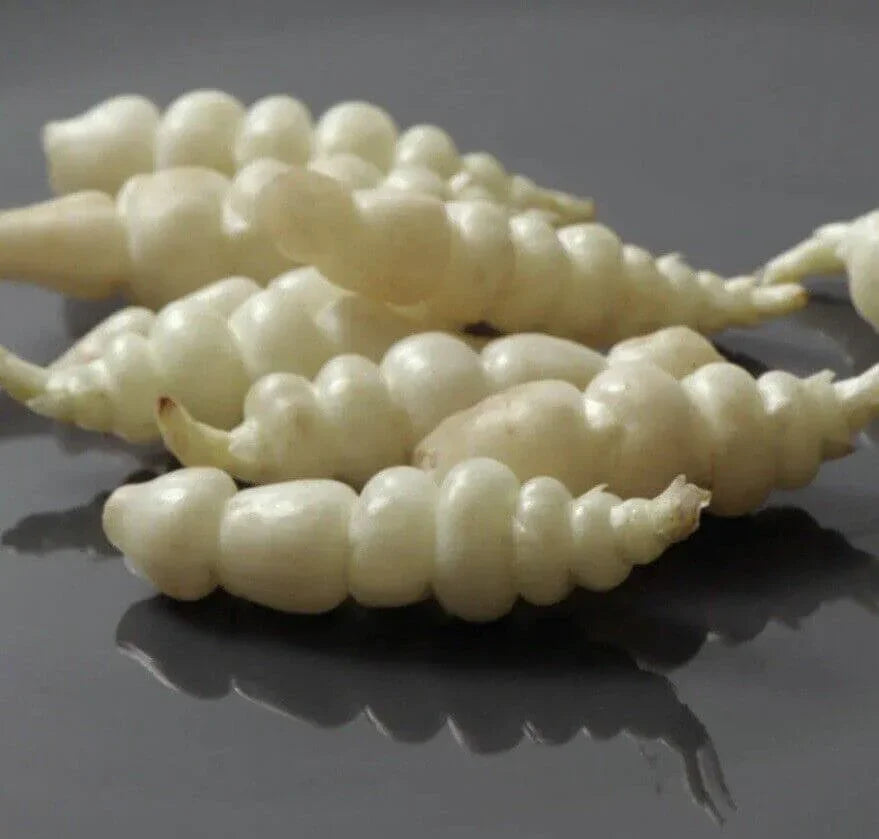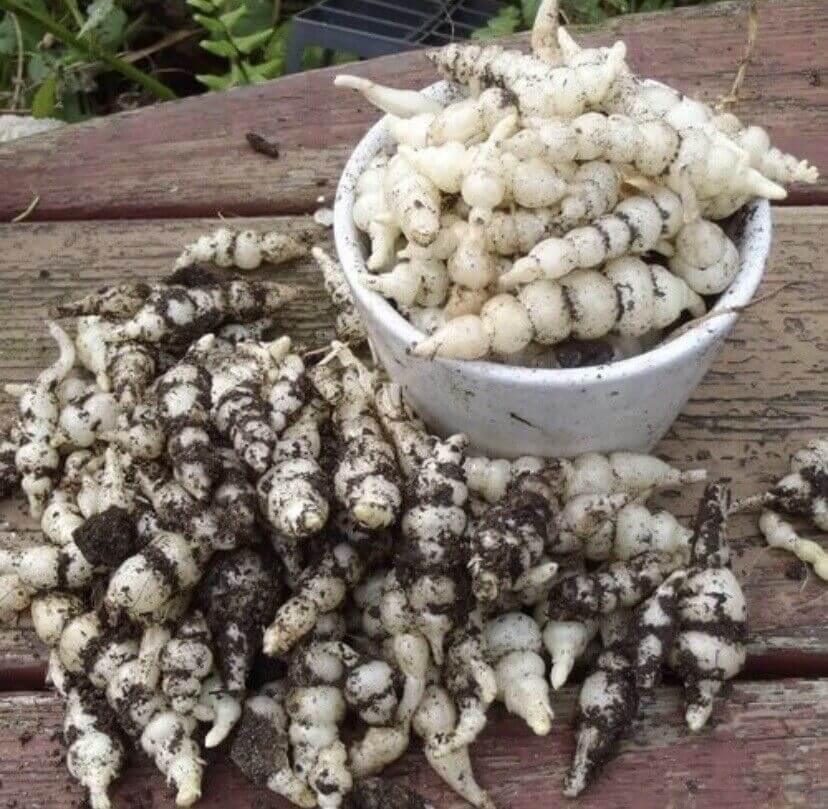Seed World
3 Stachys Affinis - Chinese Artichoke Tubers for Planting
3 Stachys Affinis - Chinese Artichoke Tubers for Planting
Couldn't load pickup availability
A true garden delicacy, Chinese Artichoke (Stachys affinis) is a cold-hardy perennial grown for its small, knobby white tubers—nutty, crisp, and perfect for fresh eating or quick cooking. Also known as Crosne or Japanese Artichoke, this mint-family root crop is easy to grow, low maintenance, and offers both ornamental foliage and culinary reward.
Unlike traditional artichokes, Chinese Artichoke grows underground tubers that form in tight clusters and resemble coiled spirals or caterpillars. Their flavor is mild, slightly nutty, and refreshingly crunchy—ideal for stir-fries, pickling, tempura, or raw snacking.
We like growing Stachys affinis for its reliability in cold climates (zones 4–9), its ornamental value in edible gardens, and its underappreciated but gourmet-grade yield. Plant once, harvest every fall, and enjoy one of the most unique root vegetables you can grow at home.
🌱 Why Grow Chinese Artichoke (Stachys affinis) Tubers
- Produces nutty, crisp tubers ideal for raw and cooked dishes
- Cold-hardy perennial (zones 4–9) with ornamental green foliage
- Unique spiral-shaped tubers with gourmet flavor and texture
- Easier to grow than traditional artichokes or Jerusalem artichokes
- Little-known heritage crop gaining renewed popularity
- Low maintenance and adaptable to most garden soils
🌿 Growing Tips
- Plant tubers in early spring or fall, 2–3 inches deep in loose, fertile soil
- Space 12–18 inches apart in full sun to partial shade
- Keep soil consistently moist but well-drained
- Tubers form in late summer and are ready for harvest after first frost
- Leave a few tubers in ground to regrow next season
- Mulch over winter in colder zones to protect roots
❓ Frequently Asked Questions (FAQ)
What does Chinese Artichoke taste like?
The tubers are mildly nutty, earthy, and crisp—similar to water chestnuts or jicama, but richer.
How big are the tubers?
They’re small, about 1–2 inches long, with a segmented, spiral shape.
Is this a perennial?
Yes. In zones 4–9, it comes back yearly if some tubers are left in the soil after harvest.
When do I harvest?
Harvest after the first fall frost. Tubers are formed late in the season and improve in flavor after cooling.
Can I eat them raw?
Yes. They’re delicious raw, lightly pickled, or added to salads for crunch.
Do they spread?
They’re not invasive but will naturalize gently if left unchecked. You can easily manage spread by harvesting fully.
Share




